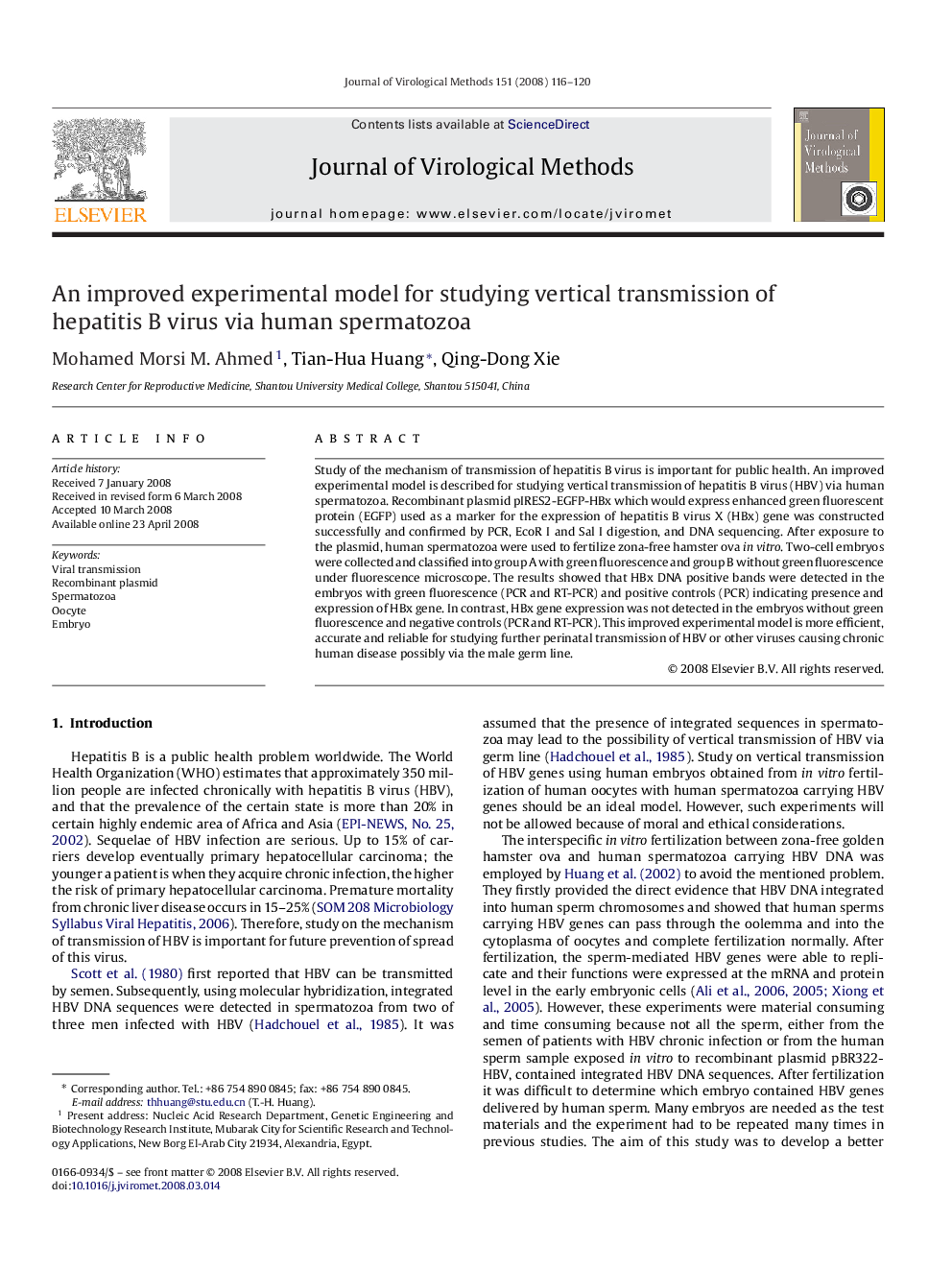| Article ID | Journal | Published Year | Pages | File Type |
|---|---|---|---|---|
| 3407868 | Journal of Virological Methods | 2008 | 5 Pages |
Study of the mechanism of transmission of hepatitis B virus is important for public health. An improved experimental model is described for studying vertical transmission of hepatitis B virus (HBV) via human spermatozoa. Recombinant plasmid pIRES2-EGFP-HBx which would express enhanced green fluorescent protein (EGFP) used as a marker for the expression of hepatitis B virus X (HBx) gene was constructed successfully and confirmed by PCR, EcoR I and Sal I digestion, and DNA sequencing. After exposure to the plasmid, human spermatozoa were used to fertilize zona-free hamster ova in vitro. Two-cell embryos were collected and classified into group A with green fluorescence and group B without green fluorescence under fluorescence microscope. The results showed that HBx DNA positive bands were detected in the embryos with green fluorescence (PCR and RT-PCR) and positive controls (PCR) indicating presence and expression of HBx gene. In contrast, HBx gene expression was not detected in the embryos without green fluorescence and negative controls (PCR and RT-PCR). This improved experimental model is more efficient, accurate and reliable for studying further perinatal transmission of HBV or other viruses causing chronic human disease possibly via the male germ line.
